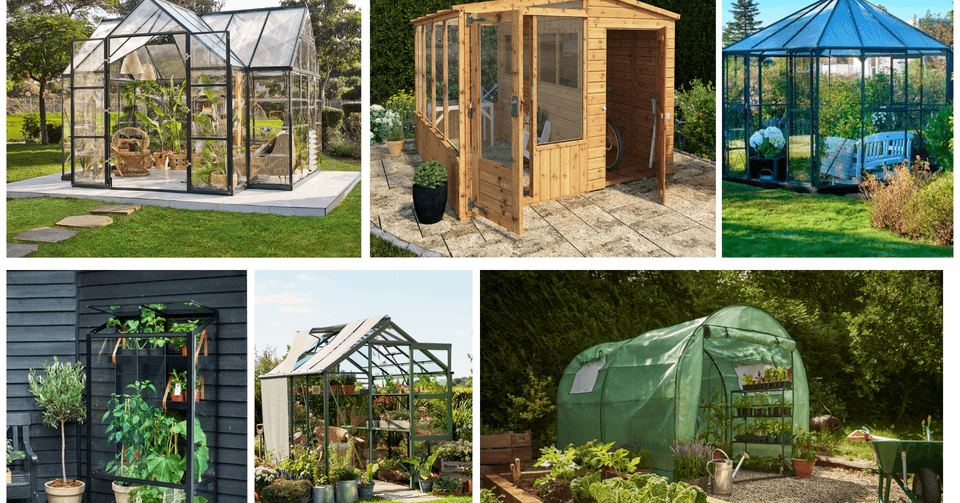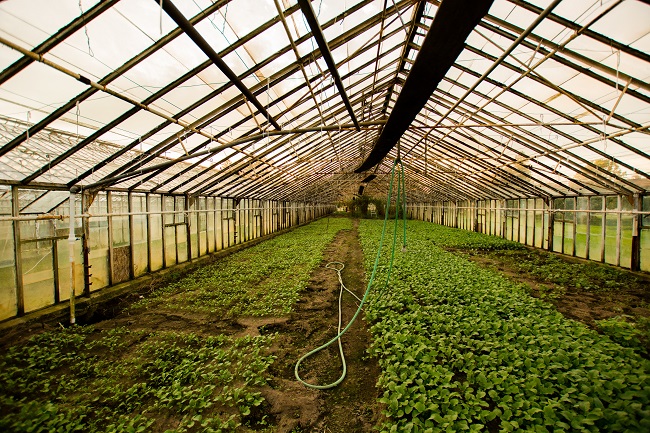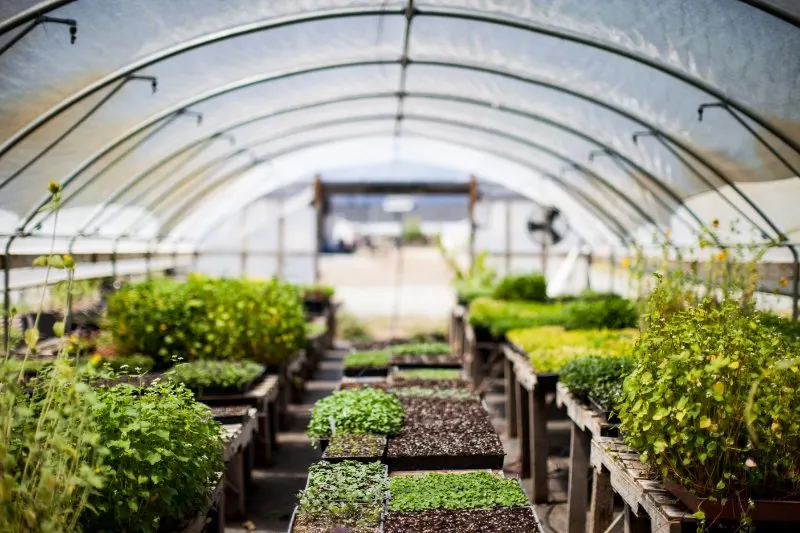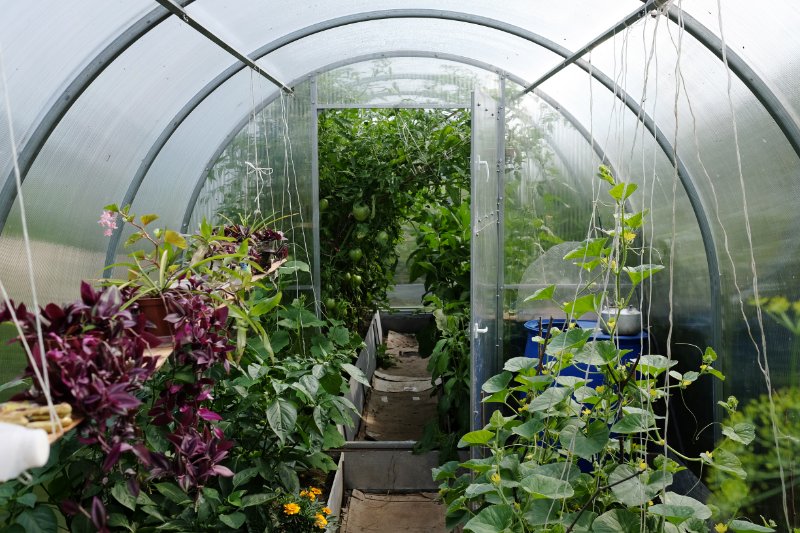
Are you considering getting a greenhouse but unsure about what size to choose? Choosing the right size for your greenhouse is a crucial decision that can greatly impact the success of your gardening endeavors. In this article, we will explore the factors to consider when determining the ideal size for your greenhouse, ensuring that you make an informed choice that meets your specific needs and goals. Whether you have ample space or limited area, we will guide you through the process of selecting the perfect size for your greenhouse, helping you create a thriving haven for your plants.

This image is property of images.immediate.co.uk.
Factors to Consider
Available space
When determining the size of your greenhouse, one of the most important factors to consider is the available space you have. Assess the area where you plan to build your greenhouse and ensure that it can accommodate the desired size. Consider the dimensions of your property and any potential obstacles, such as trees or buildings, that may restrict the available space.
Budget
Another crucial factor to consider is your budget. The size of your greenhouse will greatly influence the overall cost. It’s important to set a realistic budget and determine how much you are willing to invest in your greenhouse project. Remember to account for not only the initial construction costs but also ongoing maintenance and potential upgrades in the future.
Purpose
Define the purpose of your greenhouse. Are you planning to grow a few herbs for personal use or are you looking to cultivate a wide variety of plants for commercial purposes? Your intended purpose will heavily influence the size of the greenhouse. If you’re a beginner or only planning to cultivate a small number of plants, a smaller greenhouse may be suitable. However, if you have ambitious plans for large-scale production, you will need a much larger space.
Climate
Consider the climate in your region when determining the size of your greenhouse. If you live in an area with shorter growing seasons or harsh weather conditions, a larger greenhouse may be necessary to provide adequate protection and extend the growing season. On the other hand, if you reside in a more temperate climate, a smaller greenhouse may suffice.
Future expansion
Think about your long-term plans for your greenhouse. If you anticipate expanding your gardening endeavors or increasing your crop variety in the future, it may be wise to choose a greenhouse size that allows for future expansion. Planning ahead can save you time, money, and effort down the line.
Determining the Size
Consider the crops
Start by considering the types of crops you plan to cultivate in your greenhouse. Different plants have varying space requirements, and some may need more room to grow than others. Research the specific needs of the crops you wish to grow and take those requirements into account when deciding on the size of your greenhouse.
Consider the layout
The layout of your greenhouse plays a significant role in determining the size. Are you planning to have rows of plants or do you prefer a more free-flowing layout? Sketch out different layout possibilities and measurements to visualize how the plants will fit within the space. A thoughtful layout will help maximize the use of your greenhouse space.
Account for walkways
Don’t forget to allocate space for walkways. A greenhouse should facilitate easy movement and access to all plants. Plan for wide enough walkways to comfortably navigate through the greenhouse while ensuring ample space for plants on either side. Neglecting proper walkways can lead to cramped conditions and difficulty in caring for your plants.
Include storage area
Consider including a storage area within your greenhouse. This space will serve as a convenient spot to store gardening tools, equipment, and supplies. Having a designated storage area within your greenhouse will help keep everything organized and easily accessible, saving you time and effort.
Allow for equipment
Think about the equipment you’ll need to operate and maintain your greenhouse. This could include items such as watering systems, fans, heaters, and ventilation equipment. Allotting space for these essential components will ensure they are properly integrated into your greenhouse design and easily accessible for maintenance and repairs.
Common Greenhouse Sizes
Micro Greenhouse (6×8 ft)
A micro greenhouse measuring approximately 6×8 feet is a popular choice for beginners. It provides a manageable space for cultivating a small number of plants, making it ideal for those just starting their greenhouse journey. Micro greenhouses are particularly suitable for growing herbs and flowers, but bear in mind that the limited space may restrict the growth of larger plants.
Small Greenhouse (8×10 ft)
A small greenhouse with dimensions around 8×10 feet offers a bit more versatility in terms of plant variety. This size allows for the addition of racks and benches, providing additional space for plant storage and organization. However, similar to the micro greenhouse, space constraints may still limit the growth of larger crops.
Medium Greenhouse (12×16 ft)
A medium-sized greenhouse measuring 12×16 feet offers ample space for a larger variety of plants. With this size, you can accommodate more plants and potentially add additional shelves for even greater storage capacity. The larger dimensions also provide protection for taller crops, allowing them to grow to their full potential.
Large Greenhouse (20×30 ft)
For those with ambitious gardening goals or commercial aspirations, a large greenhouse measuring 20×30 feet is suitable. These spacious greenhouses are designed for commercial purposes and offer enough room for equipment, machinery, and large-scale production. With careful planning and efficient use of space, a large greenhouse can accommodate extensive plant cultivation.
Micro Greenhouse (6×8 ft)
Ideal for beginners
A micro greenhouse measuring 6×8 feet is an excellent choice for beginners. Its small size makes it easier to manage, especially for those who are new to greenhouse gardening. With a micro greenhouse, you can gain hands-on experience and gradually expand your skills and knowledge without feeling overwhelmed.
Suitable for herbs and flowers
The limited space in a micro greenhouse is well-suited for growing herbs and flowers. These plants typically don’t require as much space as larger crops, allowing you to cultivate a variety of aromatic herbs and vibrant flowers. Enjoy the beauty and scent of an assortment of plants in a compact and manageable environment.
Limited space for larger plants
It’s important to note that a micro greenhouse will have limited space for larger plants. If you have aspirations of growing tall or sprawling plants, you may need to consider a larger greenhouse size. However, with careful planning and utilization of vertical space, you can still accommodate smaller varieties of larger plants.

This image is property of mygardenandgreenhouse.com.
Small Greenhouse (8×10 ft)
Versatile for a variety of plants
An 8×10-foot greenhouse offers more versatility and flexibility in terms of the plants you can grow. With a slightly larger size, you can experiment with different plant varieties, including both small and medium-sized crops. From leafy greens to compact fruit-bearing plants, a small greenhouse allows you to diversify your gardening endeavors.
Space for racks and benches
One advantage of a small greenhouse is that it provides sufficient space to incorporate racks and benches. These additional features enhance organization and storage capabilities, allowing you to maximize the available space. Utilize shelves or racks to create layers within your greenhouse, ensuring each plant receives adequate sunlight and care.
Limited space for larger crops
Similar to the micro greenhouse, a small greenhouse still has limited space for larger crops. While you can accommodate a greater variety of plants, keep in mind that larger plants may require additional room to thrive. Plan your greenhouse layout carefully to make the most of the available space without overcrowding your plants.
Medium Greenhouse (12×16 ft)
Ample space for a larger variety of plants
A medium-sized greenhouse measuring 12×16 feet offers ample space for cultivating a larger variety of plants. The generous dimensions allow you to experiment with different crops, including medium-sized vegetables, fruits, and decorative plants. Enjoy the freedom to diversify your garden to your heart’s content.
Additional shelves possible
With a medium greenhouse, you have the option to incorporate additional shelves. These extra levels enhance organization and maximize the vertical space within the greenhouse. Utilize shelves to create tiered plant displays, ensuring your plants receive optimal sunlight exposure while keeping your greenhouse tidy and efficient.
Protection for taller crops
The increased height of a medium greenhouse provides protection for taller crops. Some plants naturally grow tall, and others may require trellises or support structures. In a medium greenhouse, you can comfortably accommodate these taller plants, allowing them to reach their full potential without the risk of damage from external factors.

This image is property of www.ourendangeredworld.com.
Large Greenhouse (20×30 ft)
Suitable for commercial purposes
A large greenhouse measuring 20×30 feet is well-suited for commercial purposes. If you have aspirations of starting your own greenhouse business or engaging in extensive crop production, this size provides the space and resources necessary to pursue those ambitions. From supplying local markets to running a full-scale operation, a large greenhouse opens doors to commercial opportunities.
Allows for equipment and machinery
One significant advantage of a large greenhouse is the ability to house and operate equipment and machinery. From automated irrigation systems to climate control systems, larger greenhouses can accommodate the necessary tools for efficient and productive gardening. This integration of technology streamlines processes and contributes to increased crop yields.
Efficient use of space for large-scale production
A large greenhouse enables efficient use of space for large-scale production. With careful planning and strategic layout, you can optimize the available area to maximize crop yield and minimize wasted space. Implementing specialized growing techniques such as vertical farming or hydroponics allows you to utilize every square foot to its fullest potential.
Optimizing the Space
Using vertical space
One effective way to optimize your greenhouse space is by utilizing vertical space. Take advantage of the height of your greenhouse by implementing trellises, hanging baskets, or vertical planters. These structures allow your plants to grow vertically, saving valuable floor space and increasing the overall plant capacity of your greenhouse.
Utilizing hanging baskets
Hanging baskets are a practical and efficient way to utilize overhead space in your greenhouse. They provide additional room for trailing or vining plants, allowing them to dangle from above rather than occupying valuable floor or shelving space. Hanging baskets can be suspended from the ceiling or beams, adding a visually appealing touch to your greenhouse.
Implementing raised beds
Consider implementing raised beds in your greenhouse design. Raised beds provide optimal growing conditions for your plants, with improved drainage and aeration. By elevating the soil level, you can grow a larger quantity of plants in a compact space, as well as facilitate easier maintenance and harvesting.
Planning for aisles
Ensure that your greenhouse design includes well-planned aisles for easy access to all your plants. Aisles should be wide enough to accommodate garden carts or wheelbarrows, making it convenient to transport plants, tools, and supplies throughout the greenhouse. Properly planned aisles contribute to a well-organized and efficient greenhouse layout.

This image is property of www.gardenandgreenhouse.net.
Additional Considerations
Ventilation and air circulation
Proper ventilation and air circulation are essential for maintaining a healthy and thriving greenhouse environment. Adequate airflow helps regulate temperature, control humidity, and prevent the spread of diseases. Consider installing fans or vents to promote proper air circulation and create a favorable environment for your plants.
Heating and insulation
In regions with colder climates or during the winter months, heating and insulation play a crucial role in maintaining optimal greenhouse conditions. Insulate your greenhouse with materials such as bubble wrap, polyethylene, or double-glazed glass to retain heat. Additionally, explore heating options such as electric heaters, radiant heating systems, or even geothermal heating for efficient temperature control.
Lighting requirements
Lighting is vital for the growth and development of plants in a greenhouse, especially during periods of limited natural sunlight. Evaluate the lighting requirements of your chosen plants and ensure that your greenhouse design incorporates adequate lighting systems. Consider options such as artificial grow lights, which can provide supplemental or full-spectrum lighting to support your plants’ needs.
Watering and drainage
A well-designed greenhouse should include proper watering and drainage systems. Irrigation should be efficient, allowing water to reach plants’ roots without causing waterlogging or oversaturation. Consider installing drip irrigation systems or misting systems to ensure precise and controlled watering. Proper drainage is equally important, as excessive moisture buildup can lead to root rot or other plant diseases.
Access and maintenance
Consider how you will access and maintain your greenhouse. Ensure that doors, gates, and pathways are wide enough for easy passage of equipment, materials, and yourself. Additionally, plan for any necessary maintenance tasks, such as cleaning, repairing equipment, or replacing components. Incorporate features such as accessible storage and ample space for maneuvering equipment and tools.
Finalizing the Decision
Evaluate all factors
Before finalizing the size of your greenhouse, carefully evaluate all the factors discussed. Consider your available space, budget, purpose, climate, and future plans. Assessing all these elements will help ensure that your greenhouse meets your specific needs and goals.
Consult with experts
If you’re uncertain about the ideal size for your greenhouse or need guidance on the specific requirements for your chosen plants, don’t hesitate to consult with greenhouse experts. They can provide valuable insights and help you make an informed decision based on their professional knowledge and experience.
Review local regulations
Review local regulations and building codes to ensure compliance when constructing your greenhouse. Permits may be required, and there may be restrictions on the size or location of the greenhouse. Taking the time to familiarize yourself with these regulations will help avoid potential issues or delays in your greenhouse project.
Consider long-term plans
Think about your long-term plans and how they may impact the size of your greenhouse. If you anticipate expanding your gardening activities or business, it may be wise to choose a size that allows for future growth. Investing in a larger greenhouse now can save you the expense and effort of building a new one later.
Take time for accurate measurements
Lastly, take the time to accurately measure the available space and dimensions of your greenhouse. Precision is key when determining the size, as any miscalculations can have significant implications on your project. Double-check measurements and ensure that they align with your desired size and layout.
By carefully considering all the factors, evaluating your options, and planning appropriately, you can confidently determine the size of your greenhouse. Whether you’re a beginner or a seasoned gardener, the right size greenhouse will provide you with a productive and enjoyable environment to nurture your plants and cultivate your gardening passions.

This image is property of www.ourendangeredworld.com.

